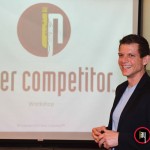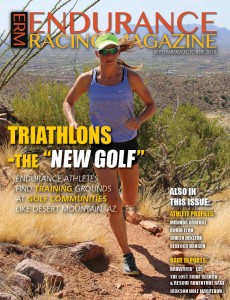Fortune 500 Leadership Coach, Sports Performance Coach
Jay Markiewicz: Inner Competitor® Training, Part 2
I recently sat through a lecture on mental toughness. One of the “tools” the presenter offered was to relax when racing. “Just relax.” I looked over at my fellow attendees and saw the frustration on their faces. The same question was running through everyone’s head: “What do I do to attain a state in which I am relaxed?” Seriously, how often do we hear that in order to be mentally tough, one should just “relax”, “focus,” “grit,” “have confidence, and my all-time favorite be-tough tool – “Overcome your fears!” There it is! Just be fearless! Tell that to a wide-eyed, first-time Ironman triathlete standing on the beach of a mass swim start. “Yo, dude, be fearless!”
I want to share with you a nugget that will change your approach to mental ability from here forward.
Let me frame this nugget: The professional field of “Leadership” is focused on the qualities and characteristics that describe effective leaders; the field of “Leadership Development” is focused on the set of actions, frameworks, and tools to improve as leaders.
Your nugget is that this same distinction applies to athletics – particularly with regard to mental ability. Recognize the distinction between “mental ability” and “mental ability development”. To me, mental ability is focused on the mental qualities and characteristics that describe high-performing athletes, and mental ability development is the set of actions, frameworks, and tools to improve as athletes.
Fearless is a quality. You want the actions and tools to get you to “fearless”.
So with this idea, let’s continue with the actions and tools in our series’ Inner Competitor® training plan to perform better and enjoy the sport more. If you have yet to read Part 1 of this series, you can find it Coaches Corner or in the Jan/Feb 2014 Issue of Endurance Racing Magazine.
To recap what you learned in my first article:
- Your brain is designed to minimize danger and maximize reward. As an athlete, you are often faced with situations your body will determine as requiring “threat response” – thereby minimizing danger.
- When experiencing a threat response, your athletic performance and enjoyment is at high risk (and by the way, when you are at work and in a threat response, your ability to perform your job at a high level is at risk, too).
- The threat response process includes your inner voice and emotions.
- Your competence at managing through the threat response leads to elevated performance and enjoyment.
- The first step to training your brain and gaining competence in managing the threat response is the intentional action of noticing.
Now, ask yourself the following questions:
- What are your three or four main tendencies when performing?
- What data do you focus on when it gets hard? When it’s going great?
- What are the top 10 situations that kick off your threat response?
- What top five things do you find yourself noticing when performing (weather, Garmin data, course, feel, body, etc.)?
Part 2 of your training plan is an expansion of Noticing, summed up with the motto: “Pay attention to what you are paying attention to!” In other words, notice what you are noticing.
I have to admit this is one of my favorite concepts, because it truly is a game-changer. The more competent you become at “paying attention to what you are paying attention to,” the better you will perform as an athlete. Period. Not only will you perform better as an athlete, you may find yourself performing better as a parent, coworker, and boss, too!
Let’s kick-start this level of Noticing. Write down everything you remember from your last workout (this is most likely what you noticed). Ask yourself: What do I remember about the weather, course, equipment, data, performance metrics, body, feeling, thinking, inner voice? This is what you are paying attention to.
The two things you are doing right now to “pay attention to what you are paying attention to” are:
- Taking a moment to look at everything you just wrote down, and recognizing any themes; and
- Listing the top five things you find yourself noticing when performing.
- This is the process of developing awareness.
With practice, you will become aware in real time, as it happens – then the real magic begins! Boom! You will look at your Garmin data and say, “Oh hey, I am paying attention to my Garmin data, hmm” – bringing smack-dab to your consciousness that you are choosing to notice Garmin data.
This concept can feel a little heady at first; stick with it! Physical training stresses your muscles; brain training stresses your brain! When I learned about this concept at Georgetown’s Leadership Coaching program, I was so scrambled that I didn’t know what the heck was going on; I don’t think I had a sensible thought the rest of the day. However, the good news is that with practice, this process becomes second nature.
To see more on why this is important, and to get a sneak preview of Part 3, check out http://innercompetitor.com/video-inner-competitor-at-endorphin-fitness-2/#.UxTrmdxJ-Qd
In the meantime, give yourself grace and have a lighthearted approach to your mental ability development. At the end of the day, enjoyment and performance go hand in hand.
Rock!
Jay
Jay Markiewicz is an endurance athlete and Fortune 500 Leadership Coach, Sports Performance Coach, and founder of Inner Competitor® – an organization that works with clients who want to perform better and enjoy their life more. You can contact Jay at [email protected].












